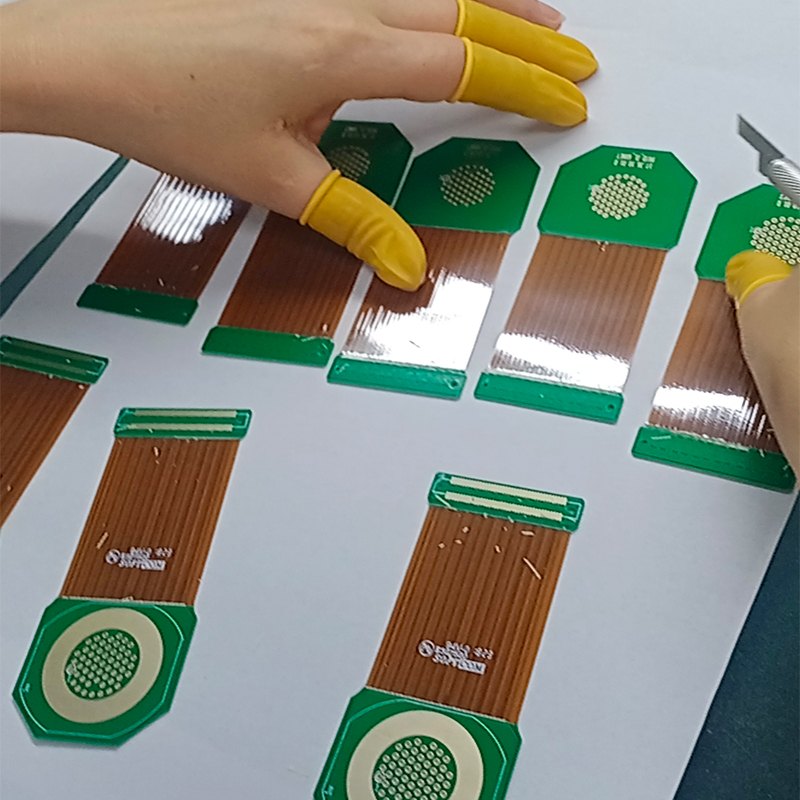In today’s technologically advanced era, consumer appliances have become an indispensable part of our daily lives. From smartphones and laptops to refrigerators and washing machines, these devices increase our comfort, convenience, and overall productivity. Behind the scenes, the key component that makes all this possible is the printed circuit board (PCB). PCBs have traditionally been rigid in nature, but with the emergence of new technologies, the concept of rigid-flexible circuit boards has emerged.
So, what exactly is a rigid-flex circuit board, and can it be used in consumer appliances? Let’s explore it!
Rigid-flex circuit boards are a combination of rigid and flexible PCBs. It combines the durability and reliability of rigid boards with the flexibility and versatility of flexible boards, providing the best of both worlds. These circuit boards are composed of multiple flexible and rigid layers interconnected by flexible conductive traces. The combination of rigidity and flexibility enables the board to be used in applications requiring mechanical support and complex layouts.
Now, back to the main question, can rigid-flex circuit boards be used in consumer appliances? The answer is yes! Rigid-flex
boards are widely used in various consumer appliances. Let’s take a closer look at some popular examples:
1. Smartphones and Tablets: The compact and slim designs of smartphones and tablets require PCBs that can fit into tight spaces while providing the necessary connectivity. Rigid-flex panels allow manufacturers to create innovative designs that reduce weight and increase functionality.
2. Smart home devices: With the rise of the Internet of Things (IoT), smart home devices have gained great popularity. These devices, such as smart thermostats and security systems, rely on compact and reliable circuits. Rigid-flex boards provide the flexibility needed to integrate a variety of sensors and components while ensuring optimal performance and durability.
3. Wearable technology: From fitness trackers to smartwatches, wearable technology has become a part of our daily lives. Rigid-flex sheets enable manufacturers to design lightweight and comfortable wearable devices that can withstand constant movement and wear. They also allow precise placement of sensors and components, ensuring accurate data monitoring.
4. Kitchen Appliances: Consumer appliances in the kitchen, such as ovens, refrigerators, and dishwashers, require PCBs that can withstand high temperatures and moisture. Rigid-flex boards offer excellent thermal management and moisture resistance, making them suitable for this type of application. Additionally, their flexibility allows for easy integration into a variety of product designs.
5. Home entertainment systems: From televisions to sound systems, home entertainment systems rely heavily on complex circuits. Rigid-flex boards provide the necessary stability and flexibility to accommodate the complex layouts required for high-quality audio and video processing.
In summary, rigid-flex circuit boards have proven to be very beneficial in the consumer electronics industry. Their ability to combine rigidity and flexibility makes them suitable for a wide range of applications. From smartphones and smart home devices to kitchen appliances and home entertainment systems, rigid-flex boards offer durability, reliability and enhanced functionality.
As technology continues to advance, we expect to see more innovative uses for rigid-flex circuit boards in consumer appliances. Their ability to meet the demanding requirements of modern devices will continue to drive their adoption and integration into our daily lives.
So the next time you use your smartphone or enjoy the convenience of a smart home device, remember the critical role that rigid-flex circuit boards play in making it all possible. They truly are the unsung heroes behind the scenes!
Post time: Oct-08-2023
Back







